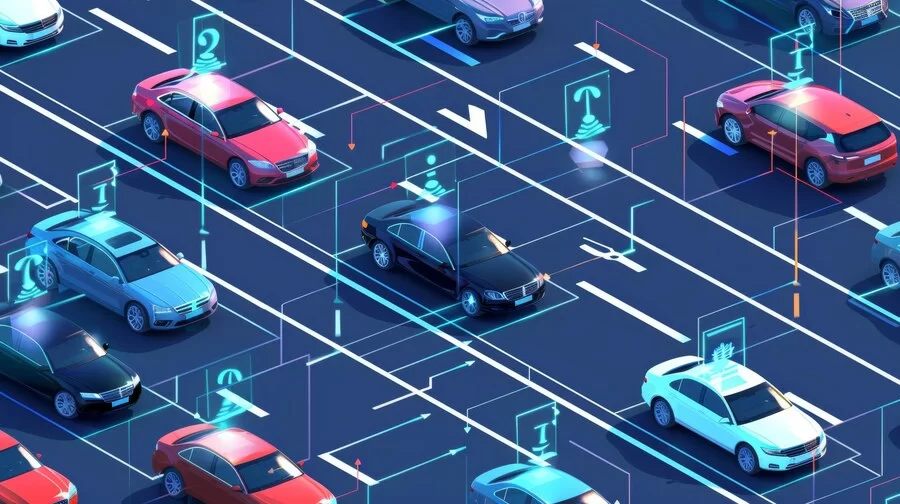- Autonomous vehicles are predicted to rewrite history and change the automotive landscape.
- Autonomous vehicles rely on radar and high-resolution cameras, plus a wealth of computing power, to detect and identify the objects on a street and ensure the car is instructed to avoid them. Some of the more basic technologies that these systems use are already in place on today’s vehicles: automatic braking systems, lane sensors and parking sensors, for example.
- Autonomous vehicles brings convenience not only to people’s daily life, but also to environment. The real promise of autonomous cars is the potential for dramatically lowering CO2 emissions.
- Fully autonomous (Level 5) cars are undergoing testing in several pockets of the world, but none are yet available to the general public. The challenges range from the technological and legislative to the environmental and philosophical.
An autonomous car is a vehicle capable of sensing its environment and operating without human involvement. A human passenger is not required to take control of the vehicle at any time, nor is a human passenger required to be present in the vehicle at all. An autonomous car can go anywhere a traditional car goes and do everything that an experienced human driver does.
The following rise of driverless vehicles is going to have a major impact on businesses and professionals.
Autonomous vs. automated vs. self-Driving: What’s the difference?
The Society of Automotive Engineers (SAE) uses the term automated instead of autonomous. One reason is that the word autonomy has implications beyond the electromechanical. A fully autonomous car would be self-aware and capable of making its own choices. For example, you say “drive me to work” but the car decides to take you to the beach instead. A fully automated car, however, would follow orders and then drive itself.
People often use ‘self-driving’ interchangeably with ‘autonomous’, but they’re not quite the same thing. A self-driving car can handle some or even all driving situations on its own, but there must always be a human present to take control if needed. These cars fall into Level 3 or Level 4 of driving automation, where they might have restrictions on where they can operate, unlike a Level 5 autonomous car, which could go anywhere.
Also read: Intel bids to shape the future of smart vehicles
Also read: What is automotive technology?
How do autonomous vehicles work?
Autonomous cars use a blend of sensors, algorithms, and processors to run their software smoothly.
These cars build and update maps of their surroundings using various sensors placed around the vehicle. Radar sensors keep tabs on nearby vehicles, while video cameras spot traffic lights, read signs, monitor other vehicles, and watch out for pedestrians. Lidar sensors bounce light pulses off the surroundings to gauge distances, spot road boundaries, and recognise lane markings. Ultrasonic sensors in the wheels detect objects like curbs and nearby vehicles during parking.
Once all this sensory data is gathered, clever software steps in to analyse it, plan a route, and send instructions to the car’s actuators. These actuators control acceleration, braking, and steering. The software relies on preset rules, obstacle avoidance algorithms, predictive modelling, and object recognition to follow traffic rules and steer clear of obstacles.

What are the challenges with autonomous vehicles?
1. Lidar and radar
Lidar can be costly and is still working on finding the sweet spot between how far it can see and how detailed its view is. But if lots of self-driving cars were all cruising down the same road, could their lidar signals get mixed up? And what about radio waves – are there enough different frequencies for all the autonomous cars we want to make?
2. Weather conditions
When an autonomous car finds itself driving in heavy rain or snow, things can get tricky. Imagine a snowy road where the lane lines are hidden under a layer of white. How do the car’s cameras and sensors keep track of where they’re supposed to go when they can’t see the lines because of water, ice, or dirt?
3. Traffic conditions and laws
Autonomous cars might face challenges when driving through tunnels or over bridges. And when traffic gets jam-packed, how will they handle it? Will they be limited to certain lanes or allowed to use carpool lanes? And what about all the regular cars still zooming around for the next few decades?
4. State vs. federal regulation
In the United States, the rules for autonomous cars have shifted recently. Instead of one set of federal guidelines, each state now makes its own rules. Some states are even thinking about charging a tax for every mile an autonomous car drives to stop them from clogging up the roads without anyone inside. And there’s talk of needing panic buttons and only allowing zero-emission autonomous cars. But will these laws be the same everywhere? And can you drive your autonomous car from one state to another without any trouble?
5. Accident liability
Who takes the blame if an autonomous car has a crash? Is it the company that made the car? Or maybe the person sitting inside? The plans for the newest autonomous cars say they won’t even have a steering wheel or dashboard, so the person inside can’t grab control in an emergency.
6. Artificial vs. emotional intelligence
Human drivers pick up on small signs and gestures to understand what’s happening around them – like making eye contact with someone crossing the road or noticing the expressions of other drivers to guess what they might do next. Can autonomous cars do the same thing? Will they be able to react as quickly as humans to keep everyone safe on the roads?
